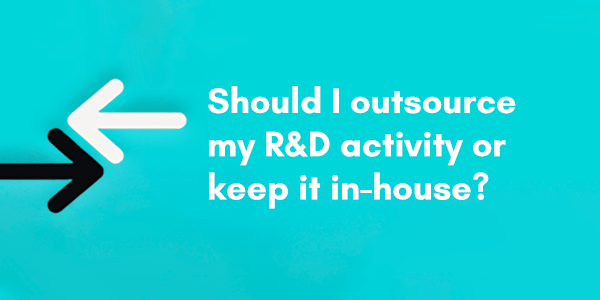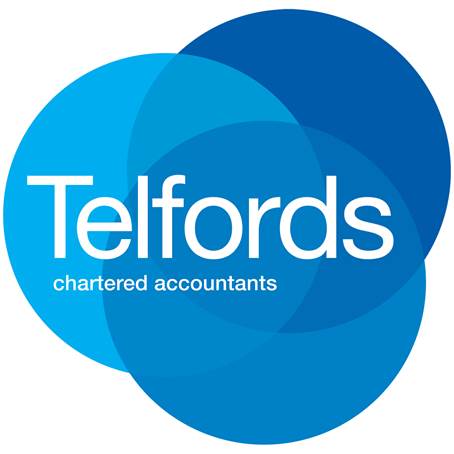Should I outsource my R&D activity or keep it in-house?

If you’re considering whether to bring some or all of your R&D project work in-house versus outsourcing it, you’ll want to feel confident that you are making the right decision for your business operationally, but also to maximise your R&D claim.
Perhaps you’re about to kickstart a new R&D project, or you’re thinking about outsourcing as you don’t want to take on a new employee. Either way, we want to equip you with all the info you need to determine the best way to incur your R&D development costs: in-house or outsourced.
In the world of R&D you’ll often see outsourcing referred to as ‘subcontracting’. Let’s start with some definitions and explanations of what we mean when we say ‘subcontracting’.
Subcontracted Work in R&D Projects
When it comes to R&D, subcontracted work is defined as when you contract and pay someone else to carry out R&D project activity on your behalf.
There are two scenarios to be aware of when it comes to subcontracted work in R&D projects:
SCENARIO 1: A business subcontracts work to you
If a business subcontracts R&D work to your business, you might not be able to claim R&D tax relief, or only a limited claim is available to you under the RDEC scheme – reducing your claim to 10.53% of the qualifying expenditure.
SCENARIO 2: Your business subcontracts work to a third party
If your business subcontracts R&D work to a third party (unconnected to your company) – you can still claim for qualifying costs but the relief available is only 65% of those costs.

Only 65% of costs can be claimed….
As you can see, before you make any decisions, there are some key points to consider, to determine the best way to incur your R&D development costs: in-house or outsourced.
As outlined above, if you are a business undertaking an R&D project for your own business, and you have sub-contracted part of the R&D project to a third party, you can only claim for 65% of the costs – and the R&D work must be for a specific part of the project.
Here’s an example of what this might look like for a business:
A UK company has an R&D project and they are considering whether to subcontract the design stage of the project, or use an in-house employee. The design stage is expected to take 6 months.
The annual salary of an adequately skilled employee is estimated at £60K.
| Cost | Employee | Outsourced |
| 6-month salary | £30,000 | |
| Estimated additional fringe costs (pension, NIC, etc) | £5,000 | |
| Payment for project work to outsourcer | £35,000 | |
| Initial cash cost to company | £35,000 | £35,000 |
| R&D allocation* | 90% | 100% |
| Subcontractor restriction | Nil | 65% |
| R&D expenditure claimable | £31,500 | £22,750 |
*You’ll notice the allocation of R&D time is slightly higher for the outsourcer, as employees are likely to have other responsibilities.
Let’s take a look at how the potential benefit breaks down for the Company:
A) For a Profitable Company
| Corporation tax saving due to R&D | £7,780.50 | £5,619.25 |
| Difference | £2,161.25 |
- B) For a Loss-Making Company
| Tax credit claim | £10,505.25 | £7,587.125 |
| Difference | £2,918.125 |
If the business is the subcontractor, they may not be able to claim under the SME R&D Scheme, but if they qualified under the RDEC scheme at 10.53% of qualifying expenditure:
| Cash refund | £3,316.95 | 0 |
| Difference | £3,316.95 |
So when it comes to the numbers, it’s clear to see that the tax saving is more attractive if you go down the in-house route.
However, taking on a new employee is a big call to make, as it comes with its own challenges. There’s the cost and time involved in finding the right person, with the right skillset that will fit into the business. Then there is the ongoing time of managing that person. It’s a significant commitment to make
Not convinced in-house is the right way?
If you’re on the fence when it comes to keeping your R&D in-house, here are some important pros and cons to consider if you’re considering the possibility of outsourcing your R&D……

PROS:
- NO IN-HOUSE EXPERTISE: Sometimes you just don’t have a choice! For example you may be looking to develop a new app but with no expertise, subcontracting to a company with the expertise is the only option.
- ACCESS TO MORE TALENT: By subcontracting, you have access to a greater pool of talent, global even!
- CHEAPER & FASTER: When it comes to R&D projects that are completely different to anything that you have done in the past, it can be much cheaper and faster to look at subcontracting rather than setting everything up in-house from scratch.
- SYSTEMS & PROCESSES: A quality subcontractor will already have the robust systems and processes in place to ensure the R&D work is tracked and expectations are managed – potentially a huge weight lifted.
- STAY FOCUSED: Outsourcing to a subcontractor helps to keep your business and its resources focused on what it is already doing.

CONS:
- THEY DON’T KNOW YOUR BUSINESS: It can be difficult for sub-contractors to have the same level of understanding of your business as your employees. However, this doesn’t always have to be a negative, sometimes a different perspective is what is needed for innovation.
- CONFLICT IN EXPECTATIONS: It’s important expectations are managed, as differences of opinion can arise when it comes to the brief, the objectives or the quality of the work. This is particularly tricky if the requirements of the R&D work change after the project has started.
- CONTROL & TIMING: Letting go of control, and the day-to-day running of the project work can be difficult. But the best way to address this is to discuss your requirements and agree milestones or check points to ensure the timely delivery of the project. The subcontractor should have processes in place ready to tackle this.
- IP & CONFIDENTIALITY: Management of intellectual property, and the potential leaking of information is a risk when you take your R&D activity outside of your business. It’s easier to manage, and less likely to happen when all of your R&D activity stays in-house.

The Verdict?
So, there you have it. Unfortunately, there isn’t a black and white answer. We’re sorry! Whether you outsource aspects of your R&D project has to be right for your business. Our advice? First, start with the calculations. Can you afford to lose 35% of your R&D claim money coming back into your business? Then, it is a case of being honest and looking at the business case of bringing in a new employee – how do the pros and cons stack up?
Think you might be eligible to claim?
If you think you might be eligible to claim R&D Tax Relief, and you’d like to find out more about how we can help you make your claim, please book a call here.
